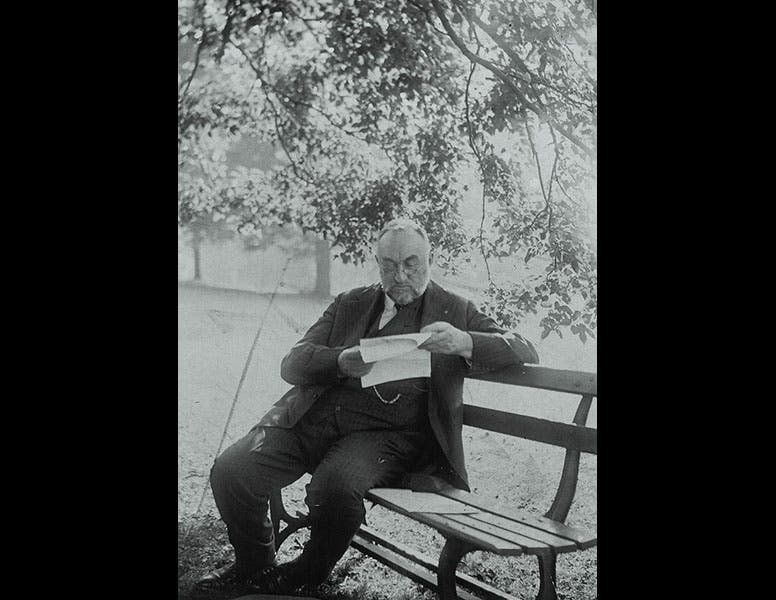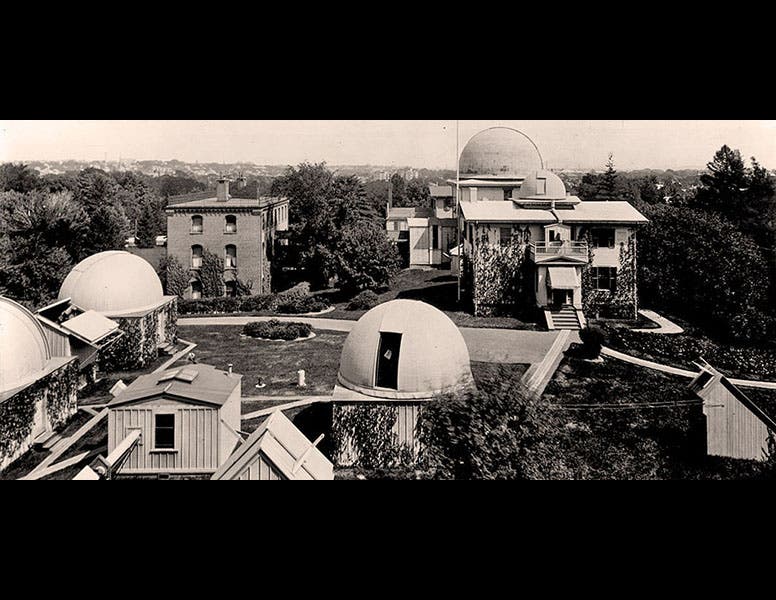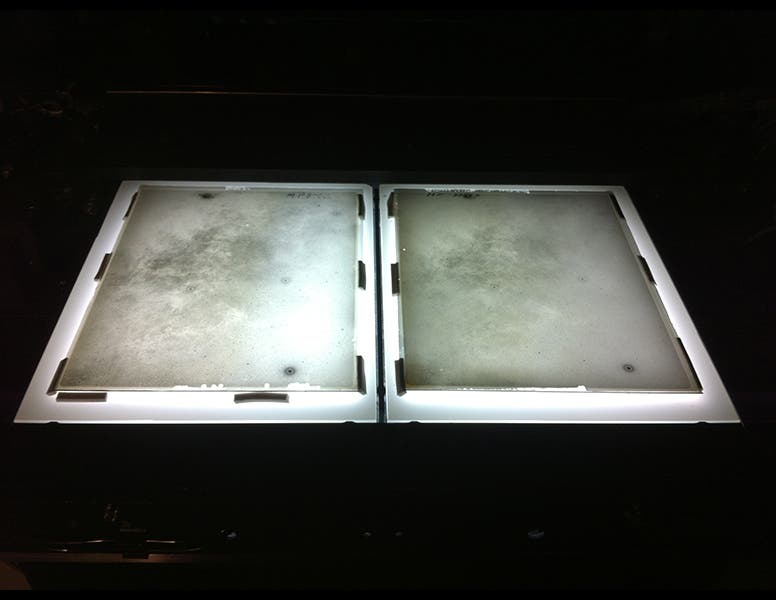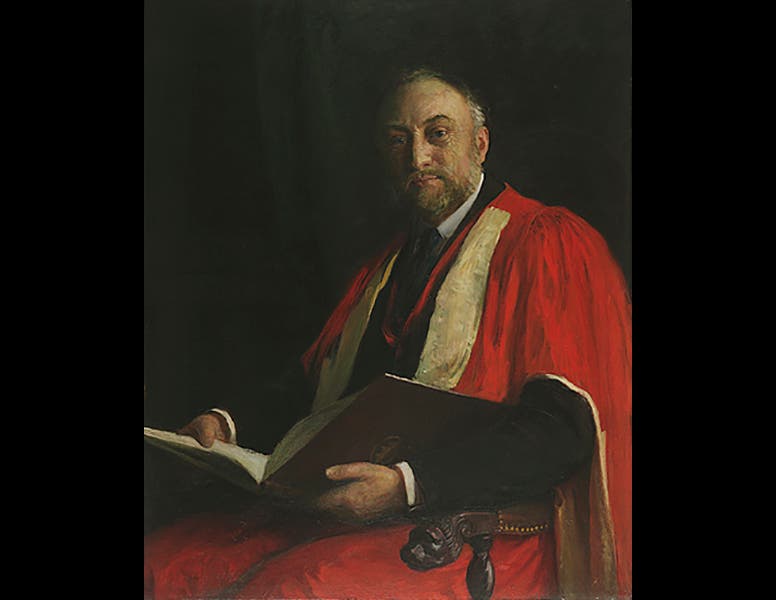Scientist of the Day - Edward Pickering
Edward Charles Pickering, an American astronomer, was born July 19, 1846. Pickering became director of Harvard College Observatory in 1877, when astronomy was changing rapidly because of two new developments: spectroscopy and photography. Attempts had begun to classify the stars by noting differences in their spectra, but Pickering jumped ahead of the field by launching a massive program to photograph fields of stars through a prism (thus producing stellar images that were not dots but tiny spectral smears) and then classifying large batches of stars all at once.
To implement his program, Pickering needed lots of skilled but cheap labor, and he found it in a new work force: women. He got the idea of hiring women from a household employee, Williamina Fleming, who was obviously intelligent and quite interested in switching her focus from dusting books to cataloging stars, and Pickering soon found other like-minded and capable women. Collectively, they became known as the "Harvard computers" or, in some circles, "Pickering's harem" (third image). As a group, they were astonishingly successful, classifying hundreds of thousands of stars and producing the system of stellar spectral types memorized by every beginning astronomy student: OBAFGKM. Many of Pickering's women employees, such as Antonia Maury, Annie Jump Cannon, and Henrietta Swann Leavitt, went on to become prominent astronomers in their own right. Pickering continued to direct the Observatory until 1919, a 42-year tenure. The photograph above shows Observatory Hill in 1899 (second image).
The glass plates taken under Pickering’s directorship are the oldest surviving photographic records of the heavens, and since the earliest ones are now 130 years old, they have become an invaluable resource for investigating stellar and cosmic evolution. Consequently, the Observatory some years ago launched the DASCH project, to scan all of the approximately 500,000 glass plates in the collection (fourth image). The project is ongoing.
The oil portrait of Pickering, by Sarah Gooll Putnam, used to hang, and perhaps still does, in the Harvard-Smithsonian Center for Astrophysics (fifth image).
Dr. William B. Ashworth, Jr., Consultant for the History of Science, Linda Hall Library and Associate Professor, Department of History, University of Missouri-Kansas City. Comments or corrections are welcome; please direct to ashworthw@umkc.edu.







![“Aurora Borealis,” hand-colored wood engraving by Josiah Wood Whymper, [Natural Phenomena], plate 2, 1846 (Linda Hall Library)](https://assets-us-01.kc-usercontent.com:443/9dd25524-761a-000d-d79f-86a5086d4774/0245ffcb-b70c-477c-8792-0a73ebd54eb2/Whymper%2011.jpg?w=210&h=210&auto=format&fit=crop)



